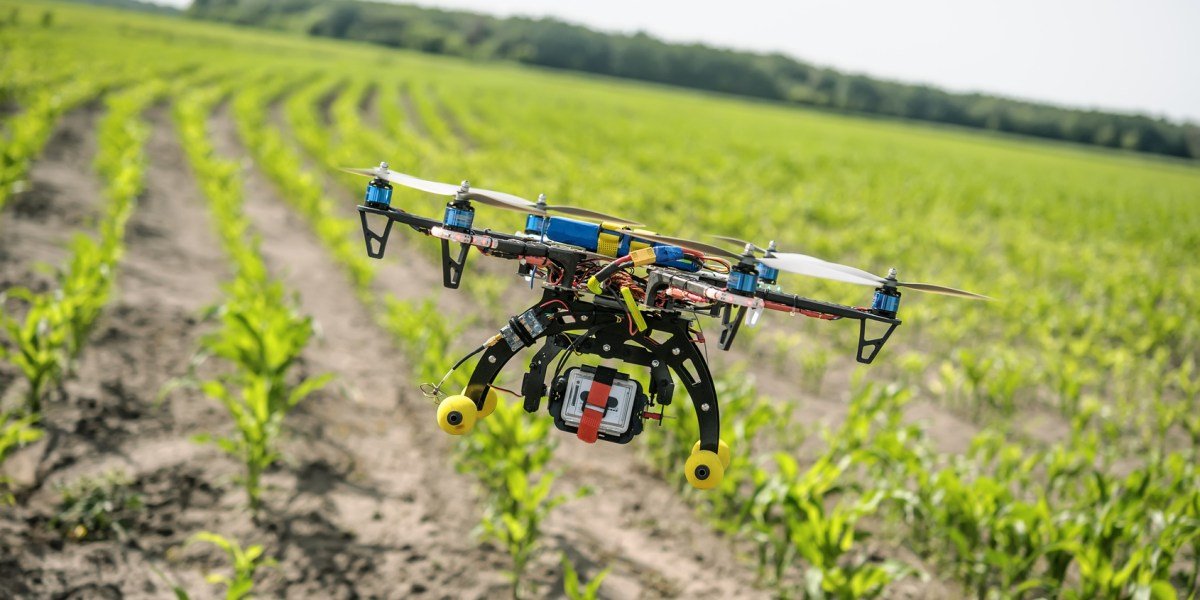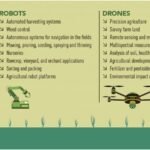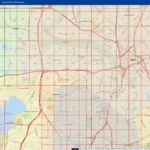Introduction
Overview of Drone Technology in Agriculture
As you delve into the world of agriculture, you might be surprised by how quickly technology is transforming traditional farming methods. One of the standout innovations is drone technology. These unmanned aerial vehicles (UAVs) have found a solid footing in agriculture, offering solutions that were once considered the stuff of science fiction. Drones in agriculture are equipped with sophisticated sensors, cameras, and imaging capabilities that provide farmers with a bird’s-eye view of their fields. Imagine being able to fly over your crops, monitoring their health, growth patterns, and even moisture levels, all from the comfort of your laptop or smartphone. This is now a reality, thanks to drones. Here are some key applications of drone technology in agriculture:
- Field Mapping: Drones can create detailed maps of your fields, helping you understand the topography and soil variations.
- Health Monitoring: Using thermal and multispectral cameras, drones can detect plant health issues long before they become visible to the naked eye.
- Spraying Capabilities: Modern agricultural drones can even spray pesticides and fertilizers, providing precise application that minimizes waste and environmental impact.
The integration of drones into farming practices signifies a leap in how farmers approach crop management and sustainability.
Importance of Revolutionizing Agriculture
You may wonder why there’s such a drive to revolutionize agriculture. Well, the global population is projected to surpass 9 billion by 2050, putting immense pressure on our food systems. Farmers face the dual challenge of increasing crop yields while also adhering to sustainable practices—no small task! Revolutionizing agriculture with drone technology can be a game-changer for several reasons:
- Efficiency Gains: Drones can cover large areas in a fraction of the time it would take traditional methods. For instance, a farmer can inspect hundreds of acres in just one flight, which would normally require hours on foot or using equipment.
- Cost-Effective Solutions: While there’s an upfront investment, the reduced labor costs and minimized waste from precision applications lead to significant savings in the long run. You could see a better return on your investment by integrating drones into your farming practices.
- Data-Driven Decisions: Drones provide invaluable data that empowers you to make informed decisions. For example, by analyzing heat maps, you can pinpoint areas that need more attention, be it irrigation or pest control, ultimately aiding in better resource management.
- Sustainability Adherence: With environmental concerns on the rise, drones help you implement sustainable farming practices. They enable you to apply inputs more accurately, reducing the risk of over-fertilization or pesticide loss to surrounding environments.
Personal anecdotes from drone-reliant farmers emphasize the transformative effect of this technology. For instance, one farmer mentioned how using drones has not only saved time but has also allowed them to identify disease-infected areas before they spread. Another noted that precision spraying reduced their pesticide use by 30%, directly benefiting both their bottom line and the local ecosystem. To visualize the advantages, consider a table demonstrating the differences before and after drone integration:
| Aspect | Traditional Farming | Drone-Enhanced Farming |
|---|---|---|
| Time taken for survey | Days | Hours |
| Pesticide usage | Excessive, often wasteful | Targeted, efficient applications |
| Data collection frequency | Weekly/Monthly | Daily/Real-time |
| Overall yield | Moderate | Increased by 10-30% |
As you can see, adopting drone technology not only modernizes farming techniques but also brings numerous benefits that directly address contemporary challenges in agriculture. Embracing this innovation can make a significant difference in ensuring food security and protecting our environment for future generations. Now, let’s explore the history of drones in agriculture and see how we got to this exciting point.
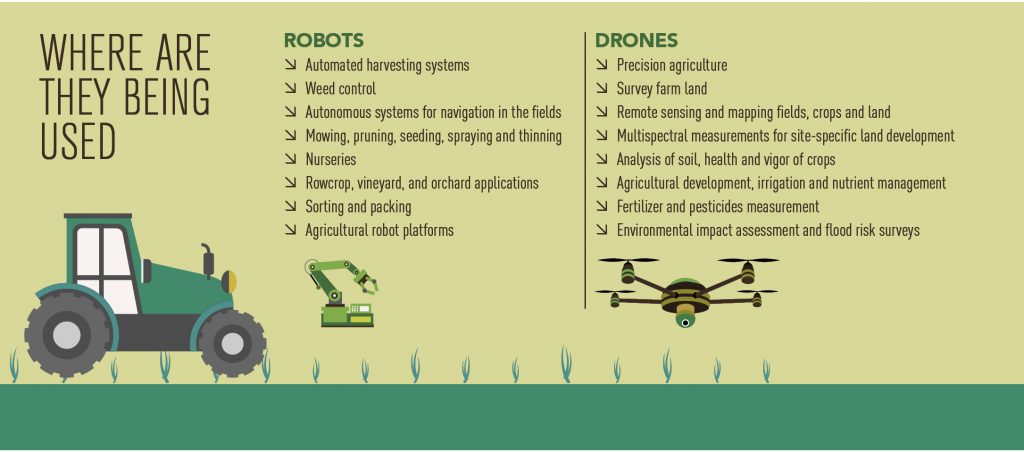
History of Drones in Agriculture
Building on the fascinating introduction to drone technology in agriculture, it’s essential to explore how we arrived at this remarkable point. The journey of drones in the agricultural sector has been a gradual evolution, marked by technological advancements and a growing awareness of the challenges farmers face.
The Early Beginnings of Drones in Agriculture
Drones, or UAVs, didn’t initially emerge from farming needs. In fact, their origins trace back to military applications, where they were used for reconnaissance missions. The transition to agriculture began to take shape in the early 2000s when farmers and agronomists recognized the potential of these devices for monitoring crops and improving yields.
- 2000s: The early drones were typically large, expensive, and cumbersome. However, a handful of innovative farmers started experimenting with UAVs to gather aerial views of their fields.
- 2010: The Federal Aviation Administration (FAA) in the United States began discussions about integrating UAVs into civilian airspace, paving the way for further exploration in agricultural use.
During this period, I remember speaking with a forward-thinking farmer who took the plunge into drone technology. He shared how a simple quadcopter provided him insights about his fields that he never had before—a perspective that was eye-opening and instrumental in planning his planting schedules.
Technological Advancements and Growing Popularity
As technology advanced, so did the capabilities of drones. The introduction of more affordable consumer drones allowed a larger segment of the farming community to experiment with this technology.
- 2013: The first commercial drones equipped with GPS and high-resolution cameras became available, making it easier for farmers to map their fields and monitor crop health.
- 2014: The FAA released rules and regulations regarding drone use, which allowed licensed UAV operators to gather data for various applications, including agriculture.
Farmers began utilizing drones for multiple purposes:
- Crop Scouting: Drones became essential tools in crop scouting, allowing farmers to identify pest infestations or nutrient deficiencies more quickly.
- Plant Health Assessment: With the introduction of thermal and multispectral imaging, farmers could analyze plant health on a whole new level, giving them the ability to address issues before they became significant problems.
A former agronomist I spoke with described how drones helped her pinpoint areas of stress in a vineyard. She shared that this technology allowed her to treat those exact areas rather than applying resources broadly, which saved time and money.
The Current Landscape of Drones in Agriculture
Fast forward to today, and drones have become essential tools for modern agriculture. Their capabilities have expanded significantly, incorporating software that allows for data analysis and seamless integration into farm management systems.
- Present Day: With advances in artificial intelligence and machine learning, drones can analyze data in real-time and provide farmers with actionable insights. This technology has transformed the way farmers make decisions—from planting to harvest.
- Regulatory Frameworks: Countries around the world have begun to establish regulatory frameworks tailored to agricultural drone use, facilitating growth in this sector while ensuring safety and compliance.
Here’s a snapshot of the current benefits of drones in agriculture:
| Benefit | Description |
|---|---|
| Increased Efficiency | Drones cover large areas in a fraction of the time. |
| Enhanced Data Collection | Real-time monitoring and analysis improve decision-making. |
| Greater Precision | Targeted applications reduce waste and environmental impact. |
| Cost Savings | Long-term savings through efficient resource management. |
The evolution of drone technology illustrates the synergies between innovation and agriculture. Each advancement empowers you as a farmer to be more precise and informed, ultimately leading to improved productivity and sustainability. As we reflect on this fascinating history, it becomes evident that the journey of drones in agriculture is far from over. The coming sections will delve into the current advantages, applications, and the exciting future that lies ahead in agricultural drone technology.
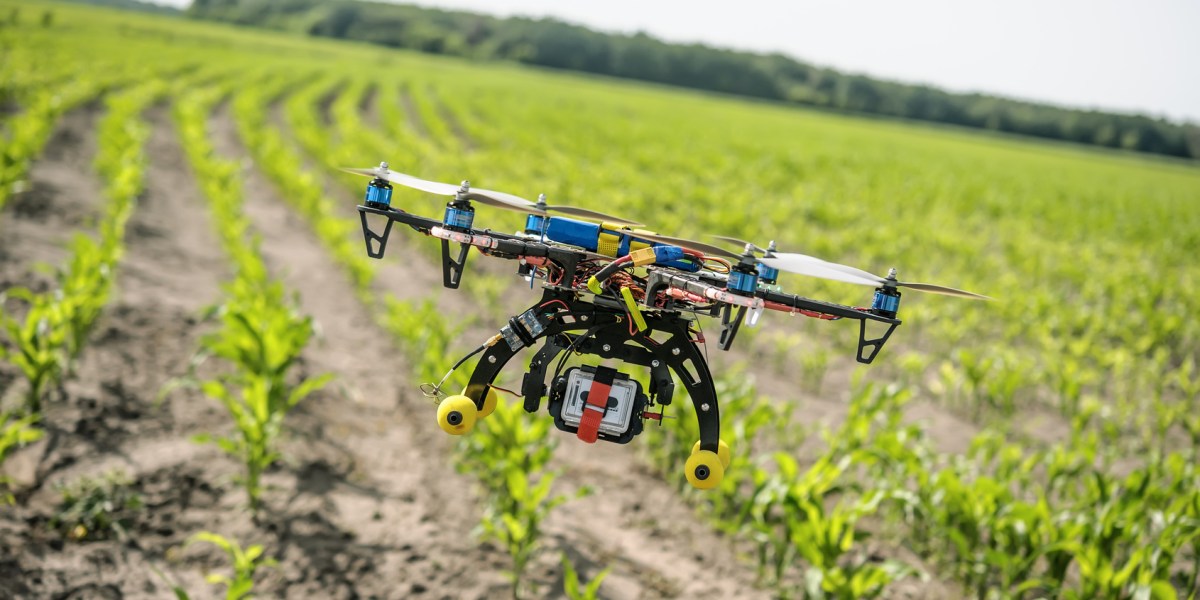
Advantages of Using Drones in Farming
Building on the rich history of drone technology in agriculture, it’s time to discuss the distinct advantages that these innovative tools bring to modern farming practices. As you consider integrating drones into your own agricultural methods, understanding these benefits can help you make informed decisions. The advantages of using drones can be broadly categorized into precision farming techniques and crop monitoring and analysis.
Precision Farming Techniques
One of the most significant advantages of drones is their role in precision farming techniques. This farming approach emphasizes the optimization of field-level management regarding crop farming. With drone technology, you can implement precision farming in a way that was once unimaginable.
- Targeted Resource Management: Drones enable you to focus on specific areas of your fields that need attention. This means you can apply fertilizers, pesticides, and water with incredible precision rather than applying them uniformly across all your land. This targeted application helps to minimize waste and reduce environmental impact.
- Soil Analysis: Drones equipped with special sensors can collect data on soil composition, moisture levels, and nutrient distribution. With this information, you can create customized soil management plans tailored to each section of your field. For example, you may find that some spots require more nitrogen while others are fine with less.
- Automated Mapping: Utilizing drones for precise mapping allows you to see variations in your fields’ topography and soil types. This information is essential when planning planting strategies and crop rotations, leading to better yields.
A fellow farmer shared his experience of using drones for targeted irrigation. By mapping out moisture levels throughout his fields, he was able to cut his water usage by nearly 30%. This not only saved him money but also contributed positively toward sustainable farming practices.
Crop Monitoring and Analysis
Another significant advantage of using drones is their impact on crop monitoring and analysis. Continuous monitoring allows you to assess crops’ health and performance throughout the growing season.
- Real-Time Data Collection: Drones can cover vast areas in mere minutes, providing you with real-time images and data. This immediate access to information allows for quick decision-making. For example, if you notice a particular section suffering from disease or pests, you can act promptly to mitigate the issue.
- Health Assessment: Drones equipped with multispectral cameras and thermal sensors can identify plant stress levels that are invisible to the naked eye. By analyzing the reflected light from plants, you can gather critical information about chlorophyll concentrations, which is vital in assessing plant health.
- Yield Prediction: Advanced algorithms can process data collected by drones to predict crop yield accurately. This prediction assists in planning harvest times and logistics, ensuring you’re fully prepared for peak harvesting periods.
To illustrate, consider a table summarizing the benefits of drone technology in crop monitoring:
| Benefit | Description |
|---|---|
| Rapid Coverage | Drones can survey hundreds of acres in just a few hours. |
| In-depth Analysis | Advanced sensors provide insights into stress factors affecting crops. |
| Predictive Analytics | Using historical data and current scans, drones can help predict yields. |
| Early Problem Detection | Timely identification of issues allows for quick interventions. |
Using drones for crop monitoring has become a game-changer for many farmers. One local farmer recounted a story of how his drone spotted a minor pest infestation that he would have otherwise missed until it escalated. Addressing the issue early saved him significant crop loss and potential economic hardship. In conclusion, the advantages of using drones in farming—particularly through precision farming techniques and advanced crop monitoring—cannot be overstated. These drones are no longer just remote-controlled gadgets; they have evolved into indispensable tools that empower you to make smarter, more informed agricultural decisions. Ready to dive deeper into the various applications of drone technology in agriculture? Let’s explore that next!

Applications of Drone Technology in Agriculture
With the advantages of drones clearly outlined, it’s fascinating to delve into the specific applications of this technology within the agricultural sector. The versatility of drones is truly impressive, allowing them to be employed in various tasks that enhance farm efficiency and productivity.
Field Mapping and Crop Scouting
One of the primary applications of drones in agriculture is their ability to create detailed field maps and conduct crop scouting. These functionalities allow farmers like yourself to gain a comprehensive view of your land’s condition without the need for labor-intensive methods.
- Detailed Field Maps: Drones equipped with GPS technology can generate high-resolution aerial maps that outline topographical features, soil types, and even drainage patterns. This information is invaluable when planning crop rotation strategies and placements.
- Crop Scouting: Regular drone flights can enhance crop scouting efforts by identifying areas of concern, such as nutrient deficiencies or pest infestations. For instance, a farmer I know shared how doing manual crop scouting became obsolete after he integrated drones. He could quickly assess several hundred acres in one afternoon, streamlining his workflow significantly.
Here’s a quick breakdown of how drones aid in field mapping and scouting:
| Application | Benefits |
|---|---|
| Aerial Mapping | Offers real-time visuals and precise data for planning. |
| Efficient Scouting | Saves time and effort, allowing for quicker interventions. |
Environmental Monitoring
Drones are not just about crop management. They also play a vital role in environmental monitoring, helping you maintain sustainable practices on your farm.
- Water Management: Drones can track water retention in fields and identify areas that are either over or under-irrigated. By implementing this data, farmers can optimize irrigation systems to conserve water while meeting plant needs effectively.
- Wildlife Monitoring: For farms that aim to promote biodiversity, drones can be employed to monitor wildlife, helping you understand how agricultural practices impact local ecosystems. This insight leads to better environmental stewardship.
An interesting example comes from a farm that uses drones to monitor local bird populations. This innovative approach helps them gauge the effectiveness of their integrated pest management strategies, ensuring that while they control pests, they also maintain the balance in the ecosystem.
Precision Agriculture and Crop Treatment
As we move further into the realm of precision agriculture, drones have become indispensable tools for crop treatment. They enable efficient application of fertilizers, pesticides, and herbicides.
- Targeted Spraying: Drones equipped with spraying capabilities allow for precise applications of inputs directly on affected areas. This minimizes waste and reduces costs associated with over-applying treatments.
- Data-Driven Decisions: By combining crop health data with pest distribution maps, you can make informed decisions about when and what to spray, enhancing productivity.
For example, after a particularly harsh winter, a friend of mine utilized drone technology to spray for a fungal outbreak. By using the drone’s maps and monitoring capabilities, he was able to effectively treat just the affected areas, saving both time and resources.
| Crop Treatment | Benefits |
|---|---|
| Targeted Application | Reduces input costs and waste. |
| Timely Intervention | Allows for quick reaction to pest invasions or disease outbreaks. |
Agronomic Research and Data Collection
Lastly, drones are making waves in agronomic research and data collection. The insights gathered can sharpen your farming strategies significantly.
- Research Support: Drones assist agronomists and researchers in gathering vast amounts of data to study crop varieties, growth patterns, and environmental impacts. This data helps guide crop breeding and management practices.
- Yield Prediction Models: By leveraging collected data, farmers can employ predictive models to estimate crop yields more accurately, leading to better planning and profitability.
In summary, the applications of drone technology in agriculture are diverse and impactful. From field mapping and crop scouting to environmental monitoring and precision treatment, drones are reshaping the farming landscape. Agriculture is undergoing a remarkable transformation, and staying ahead means embracing these innovative tools. As we look ahead, let’s consider the impact of drones on crop yield and efficiency!
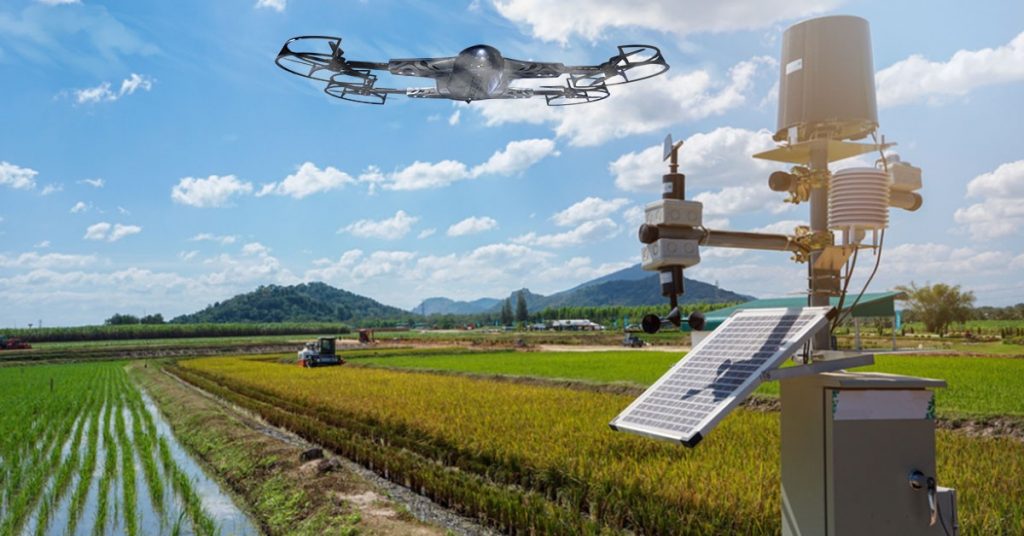
Impact of Drones on Crop Yield and Efficiency
Having explored the diverse applications of drone technology in agriculture, it’s crucial to examine the tangible impacts these innovations have on crop yield and overall farm efficiency. Drones not only enhance productivity but also enable smarter resource management, ultimately transforming the way farmers operate.
Enhancing Crop Productivity
One of the most compelling impacts drones have on agriculture is their ability to enhance crop productivity. As farmers like you seek to maximize yields, drones serve as a valuable ally in achieving that goal.
- Early Detection of Issues: Drones equipped with advanced sensors and imaging technology can identify problems in the early stages. For instance, they can detect plant stress due to pests, diseases, or nutrient deficiencies well before these issues become visible to the naked eye. By proactively addressing these problems, you can mitigate damage and ensure better yields.
- Targeted Crop Management: With detailed aerial imagery, you can obtain a better understanding of crop health across various sections of your field. For example, a farmer I know used drone data to identify underperforming areas in his cornfield. Armed with this knowledge, he adjusted his fertilization techniques, resulting in a noticeable increase in yield come harvest time.
- Customized Farming Practices: The data collected via drones allows for tailored farming practices based on specific crop needs. By understanding how different parts of a field respond to inputs, you can apply methods that maximize yield for each area, leading to an overall increase in productivity.
Here’s how drone technology can enhance crop productivity summarized in a table:
| Benefit | Description |
|---|---|
| Early Issue Detection | Identifies problems before they escalate. |
| Detailed Crop Health Insights | Enables targeted interventions for underperforming crops. |
| Customized Fertilization Plans | Tailors practices to specific crop needs. |
Optimizing Resource Management
In addition to boosting productivity, drones are paving the way for optimizing resource management. Effective use of resources is not only essential for sustainability but also a significant factor in your bottom line.
- Water Conservation: Drones provide valuable information about soil moisture levels, identifying which areas require irrigation without wasting resources on dry spots. As a result, you can optimize your irrigation schedule and significantly reduce water usage. Many farmers report cutting their water consumption by up to 30% through strategic drone-based irrigation management.
- Efficient Chemical Applications: When it comes to applying pesticides, herbicides, and fertilizers, drones allow for precise, targeted applications. For instance, one farmer shared that using a drone for chemical applications minimized their usage by 40%, greatly reducing costs and limiting environmental impact.
- Labor Efficiency: By automating tasks that typically require intensive labor, drones enable you to allocate your workforce to other areas, improving overall operational efficiency. The time saved on scouting and monitoring translates into more time for productive work, which is vital during peak seasons.
To visualize the benefits of optimized resource management through drone technology, consider the following table:
| Resource Management Aspect | Benefits |
|---|---|
| Water Usage | Reduces waste and conserves vital resources. |
| Chemical Application | Lowers cost and environmental impact through precision. |
| Labor Efficiency | Frees up workforce for other essential tasks. |
Ultimately, the integration of drone technology into your farming practices can profoundly impact both crop yield and resource management. By enhancing productivity through early detection of issues and customized approaches, combined with optimizing resource usage, drones become indispensable tools in modern agriculture. As we continue to explore the drone revolution in agriculture, let’s address the challenges and limitations that come with integrating this technology into farming practices.

Challenges and Limitations of Drone Technology in Agriculture
As we’ve seen, drone technology brings numerous advantages that profoundly impact crop yield and efficiency. However, it’s essential to address the challenges and limitations associated with adopting drones in agriculture. Understanding these obstacles can help you navigate the complexities of integrating this technology into your farming practices.
Technical Challenges
One primary area where challenges arise is the technical limitations of drone technology itself. While drones have advanced considerably, they are not without their hurdles.
- Limited Flight Time: Most commercial drones have a limited battery life, typically ranging from 20 to 30 minutes. This constraint can make it challenging to cover large fields in one flight, necessitating multiple battery swaps or drone deployments. A farmer I know faced this issue while trying to map his expansive acreage; he had to manage multiple flights, which extended his overall workload.
- Data Processing: The volume of data collected by drones can be overwhelming. While the insights are invaluable, processing and analyzing this data requires specialized software and expertise. For farmers who may not be tech-savvy, this can pose a significant barrier to entry.
- Weather Dependency: Drones rely heavily on good weather conditions. Rain, high winds, or low visibility can limit their usability, impacting your ability to conduct timely assessments and treatments. I’ve heard stories of farmers missing crucial scouting windows simply due to unpredictable weather.
Financial Constraints
Another significant challenge for many farmers considering drone technology is the associated costs. While there are evident long-term savings, the initial investment can be daunting.
- High Upfront Costs: Quality agricultural drones equipped with advanced sensors and imaging capabilities can be expensive to purchase. For smaller farms with tight budgets, investing in drone technology may seem unattainable.
- Ongoing Maintenance and Training: After the initial purchase, there are also costs related to maintenance, repairs, and software updates. Additionally, training staff to operate drones and analyze the data can add further financial strain.
To illustrate the financial considerations, here’s a table summarizing key cost-related aspects of integrating drones into farming:
| Cost Aspect | Description |
|---|---|
| Initial Investment | High costs for quality drones and technology. |
| Maintenance and Repairs | Ongoing expenses for keeping the equipment functional. |
| Training Staff | Investment in time and resources for skill development. |
Regulatory and Legal Issues
Another complex area revolves around the legal and regulatory challenges associated with drone use in agriculture. Navigating the rules can be tricky.
- Regulatory Compliance: Different countries and regions have varying regulations concerning drone usage. This can create confusion and compliance challenges. For instance, farmers must often obtain permits and ensure they’re following local laws regarding flight altitudes and no-fly zones.
- Privacy Concerns: The aerial capabilities of drones raise questions about privacy, especially if the flights overlap with neighboring properties. Farmers need to be aware of local regulations governing aerial surveillance and privacy rights.
A local farmer mentioned how he was initially hesitant to use drones due to concerns over privacy issues with his neighbors. This perspective is common and highlights the importance of fostering good community relationships and understanding drone regulations.
Cultural Resistance**
Finally, there may be cultural resistance to adopting new technologies. Traditional farming approaches can be deeply ingrained within farming communities, leading to skepticism about new methods.
- Skepticism About Efficacy: Some farmers may doubt the effectiveness or reliability of drone technology compared to traditional scouting methods. Overcoming this skepticism often requires demonstrations and education about the tangible benefits these tools can bring.
- Knowledge Gap: Not all farmers are comfortable with advanced technology. Bridging this knowledge gap and making technology accessible to everyone in the farming community is vital for widespread adoption.
In conclusion, while drone technology offers significant advantages in agriculture, it’s crucial to recognize and address its challenges and limitations. By understanding the technical, financial, regulatory, and cultural hurdles, you can make informed decisions about how to integrate drones into your farming practices. As we look forward, let’s explore the future trends and innovations shaping agricultural drones!

Future Trends and Innovations in Agricultural Drones
Having explored the challenges and limitations of drone technology, it’s exciting to look ahead at the future trends and innovations that are set to shape agricultural drones. As technology continues to evolve, the potential for drones in agriculture is bound to expand, bringing even more benefits to farmers like you.
Increased Automation and AI Integration
One of the most notable trends in agricultural drones is the integration of automation and artificial intelligence (AI). This shift towards smart farming is revolutionizing how you manage your land and crops.
- Autonomous Drones: Future drones are expected to operate with minimal human intervention. Imagine a situation where drones autonomously perform tasks—like crop scouting, irrigation, or even fertilizer application—based on pre-determined schedules and real-time data analysis. One local farmer has already begun using semi-autonomous drones for crop monitoring, significantly reducing the labor needed for field inspections.
- AI-Driven Analytics: With improvements in AI, drones can analyze data in real-time to make informed decisions. For instance, AI algorithms can detect patterns in crop health and automatically recommend interventions based on data collected during flights. This kind of capability could minimize the guesswork involved in farming, allowing you to focus on what truly matters.
| Future Innovation | Description |
|---|---|
| Autonomous Operations | Drones that can operate and analyze independently. |
| Real-Time AI Analytics | Advanced algorithms that provide immediate insights and recommendations. |
Advanced Sensor Technologies
As sensor technology continues to evolve, drones will become even more effective tools for precision agriculture. The future holds tremendous potential for enhanced data collection capabilities.
- Multispectral and Hyperspectral Sensors: These advanced sensors capture data across a wider range of wavelengths, allowing you to assess crop health in much greater detail. For example, hyperspectral imaging can reveal subtle changes in plant health that are not visible to the human eye. A farmer I spoke with recently found that implementing these sensors helped him catch early signs of disease in his crop, boosting his yields.
- Soil Sensors: Future agricultural drones may be equipped with soil sensors that collect data on moisture levels, pH balance, and nutrient content as they fly over fields. This can inform more precise planting and fertilizing strategies, leading to better resource management.
Enhanced Data Sharing Capabilities
Another trend to watch is the movement towards improved data sharing and collaboration among farmers. As technology connects farmers to one another and to agricultural experts, the potential for collective growth increases.
- Cloud-Based Platforms: Farmers will increasingly use cloud-based platforms to store and analyze drone-collected data. This enables easy sharing of insights and best practices between fellow farmers, agronomists, and cooperatives. Imagine being able to compare data with your neighbors and collectively optimize farming strategies!
- Mobile Apps for Farmers: The development of user-friendly mobile applications will facilitate real-time access to drone data. These applications can alert you to issues detected by drones and provide immediate recommendations, streamlining decision-making processes.
| Future Data Sharing Innovations | Description |
|---|---|
| Cloud-Based Data Platforms | Easy access and sharing of valuable insights. |
| Mobile Applications | Real-time alerts and recommendations on-the-go. |
Regulatory Developments and Standardization
As the use of agricultural drones continues to grow, the regulatory landscape will evolve as well. Future innovations will require comprehensive guidelines to ensure safe and effective use.
- Standardized Training Programs: To promote responsible drone usage, we can expect the establishment of standardized training programs for drone operators. These programs will ensure that farmers are well-versed in local regulations and equipped with the necessary skills to operate drones effectively.
- Evolving Regulations: As technology advances, there will be a need for updated regulations that account for the capabilities of new drone technologies. This will likely involve creating clearer guidelines for autonomous operations and data privacy.
In conclusion, the future of agricultural drones is bright, filled with trends and innovations that promise to enhance farming efficiency, productivity, and sustainability. As automation, advanced sensing technologies, and improved collaboration become more commonplace, you’ll find yourself better equipped to tackle the challenges of modern agriculture. The road ahead is exciting, and staying informed about these trends can help you capitalize on the opportunities they present. Let’s now turn our attention to the regulatory considerations for drone use in agriculture, ensuring you’re prepared to embrace the technology responsibly!

Regulatory Considerations for Drone Use in Agriculture
As we delve deeper into the future of agricultural drones, it’s crucial to address the regulatory considerations surrounding their use. With the rapid advancement of drone technology, regulations are evolving to ensure safety, privacy, and compliance. Understanding these regulations is essential for you as a farmer, ensuring you can leverage drone technology responsibly and effectively.
Understanding the Regulatory Landscape
The regulatory framework for drone usage in agriculture varies globally, and it can be quite complex. Here’s a breakdown of some key considerations:
- National Regulations: In many countries, drones fall under aviation regulations overseen by national aviation authorities. For example, in the United States, the Federal Aviation Administration (FAA) regulates drone use for all purposes, including agriculture. You need to be familiar with the rules that govern drone operations, such as flight restrictions, altitude limits, and operational areas.
- Registration Requirements: Most countries require commercial drone operators to register their drones and obtain specific licenses or permits. For example, in the U.S., you must apply for a Part 107 Remote Pilot Certificate to operate drones for commercial purposes. This certification process includes passing a knowledge test on aviation regulations and safe operating practices.
A farmer in my community shared how he maneuvered through the FAA regulations to become certified. Despite the hurdles, he emphasized that being compliant provided peace of mind and opened doors for more opportunities.
Operational Limitations and Guidelines
Once you’ve navigated the legal landscape, it’s essential to be aware of operational limitations and guidelines that affect how you can use drones on your farm.
- Flight Restrictions: Be mindful of no-fly zones, such as areas near airports, military bases, and densely populated regions. You can use various apps and resources to find out if your intended flight paths fall within these restricted areas.
- Altitude Limits: Most regulations stipulate maximum altitude limits for drone flights. For instance, the FAA restricts flights to a maximum altitude of 400 feet above ground level, unless you are flying near a structure and remain within 400 feet of that structure.
| Regulatory Aspect | Description |
|---|---|
| National Regulations | Governing body rules, e.g., FAA in the U.S. |
| Registration Requirements | Mandatory registration and certification processes. |
| Flight Restrictions | No-fly zones and altitude limitations. |
Privacy and Data Protection
With drones capable of capturing high-resolution images and data, privacy and data protection concerns arise. These concerns are crucial to consider when using drones in agriculture.
- Respecting Neighbor Privacy: Since drones can easily hover over adjoining properties, it’s vital to respect the privacy rights of your neighbors. Establishing good relationships with nearby landowners and communicating your drone operations can help mitigate any misunderstandings.
- Data Handling Practices: If you’re collecting data using drones, especially visual data related to crops or fields, consider how you store, share, and protect that information. Familiarizing yourself with data protection regulations is critical, as mishandling data could lead to legal issues.
A farmer shared that after realizing how easily drone data could be misinterpreted, he decided to create a data-sharing agreement with his neighbors. This proactive approach not only preserved privacy but also helped build a stronger farming community.
Staying Informed and Compliant
Given the ever-changing nature of both drone technology and regulatory frameworks, staying informed is crucial. Here are some suggestions to help you remain compliant:
- Join Local Farming and Drone Associations: Many agricultural and drone associations offer resources, guidance, and updates on regulatory changes. Being part of these networks can keep you informed about best practices and new regulations.
- Regular Training and Education: Take advantage of training opportunities to ensure you’re up to date on the latest regulations and technological advancements. This not only improves your skills but also helps maintain compliance.
| Compliance Tips | Recommendations |
|---|---|
| Join Associations | Stay connected with resources and guidelines. |
| Pursue Continuous Education | Regular training to keep up with regulations. |
In conclusion, while drone technology in agriculture offers immense potential, understanding and adhering to regulatory considerations is paramount. By navigating the legal landscape, respecting neighbors’ privacy, and staying informed, you can ensure that you’re utilizing drones safely, responsibly, and effectively in your farming practices. As we conclude this journey into agricultural drones, it’s exciting to imagine how these regulations will evolve alongside technology in the coming years, paving the way for even more innovations in farming.
